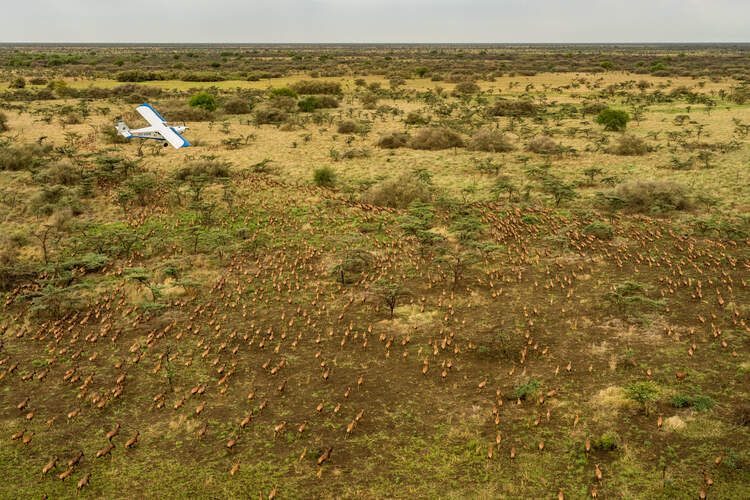
A survey of two national parks in South Sudan has revealed a migration of six million antelope, which makes it the worlds largest migration of large mammals
By
It’s been called ‘The Greatest Wildlife Show on Earth’, but the annual migration of over a million wildebeest, zebra and various antelope across the savannahs of East Africa’s Masai Mara and Serengeti might have to be renamed ‘The Second Greatest Wildlife Show on Earth’ if the results of a new wildlife survey conducted in South Sudan are anything to go by.
After decades of civil war, South Sudan finally broke away from Sudan to become the world’s newest country in July 2011. Despite initial optimism, South Sudan has struggled to hold itself together and frequently finds itself ranked close to the bottom of reports ranking nations by their development and quality of life.
Although there had long been rumours of a huge migration of large mammals in South Sudan, with a 2007 survey by the Wildlife Conservation Society estimating a migration involving around 1.3 million animals, a combination of insecurity, the sheer remoteness of the terrain and the fact that much of the area forms a vast flood plain, meant that nobody really knew just how big this migration might be and how well the wildlife populations had survived years of conflict and insecurity.
That’s now all changed. African Parks, a conservation organisation that takes on the rehabilitation and management of struggling national parks and other protected areas across Africa, have recently concluded an aerial survey of the Boma and Badingilo national parks, which revealed a spectacular migration of approximately five million white-eared kob, just under 300,000 tiang, 350,000 Mongalla gazelle, and 160,000 bohor reedbuck. Added together this means that just under six million antelope are involved in this migration which makes it – by far – the world’s largest land mammal migration.
To come up with these results, the team used two light planes fitted with cameras that took a photo every two seconds. By flying up and down transacts in and around the parks a total of 330,000 images were taken. In addition to the aerial survey, collars were fitted to 251 large mammals in order to measure the distances they travelled. The collared white-eared kobs were discovered to be covering around 2,000km (1,250 miles) across the Boma and Badingilo national parks, as well as into western Ethiopia’s neighbouring, and equally remote, Gambella National Park.
Announcing the survey results, Salva Kiir Mayardit, President of South Sudan said: ‘As we all know South Sudan is a land rich in biodiversity, boasting some of the most beautiful animals. Our grasslands and protected sites provide a haven for some of the largest populations of antelope on earth. As South Sudan continues to develop, we are committed to transforming the wildlife sector into a sustainable tourism industry.’
Many ethnic groups live within the area surveyed and each of these communities has deep cultural traditions, and livelihood activities that are heavily reliant on wildlife and the vast landscapes they inhabit. And so while the numbers of antelope don’t appear to have declined over the decades, the survey results did reveal that in comparison with studies conducted in the 1980s there had been substantial declines in most sedentary, non-migratory species, including elephant, warthog, cheetah, hippo and buffalo.
While celebrating the results of the survey, Peter Fearnhead, CEO of African Parks, also urged caution: ‘The results of this survey are nothing short of staggering. The astonishing scale of the migration is only equalled by the responsibility to ensure that it survives into the future in an extremely complex landscape. This wildlife and larger ecosystem is the basis for survival for multiple [human] ethnic groupings which are often in conflict with each other over resources. Successful management of this landscape will only be possible through building trust with and amongst these ethnic groupings. Already the threats to the system are abundantly clear with commercial poaching of the wildlife at a scale that we have never witnessed before. Working with these local communities to protect this vital ecosystem will help perpetuate this global phenomenon whilst also bringing about stability, safety and security and creating a sustainable future for the people who live in this area – many of whom are still recovering after years of war and disruption’.
Related articles:




